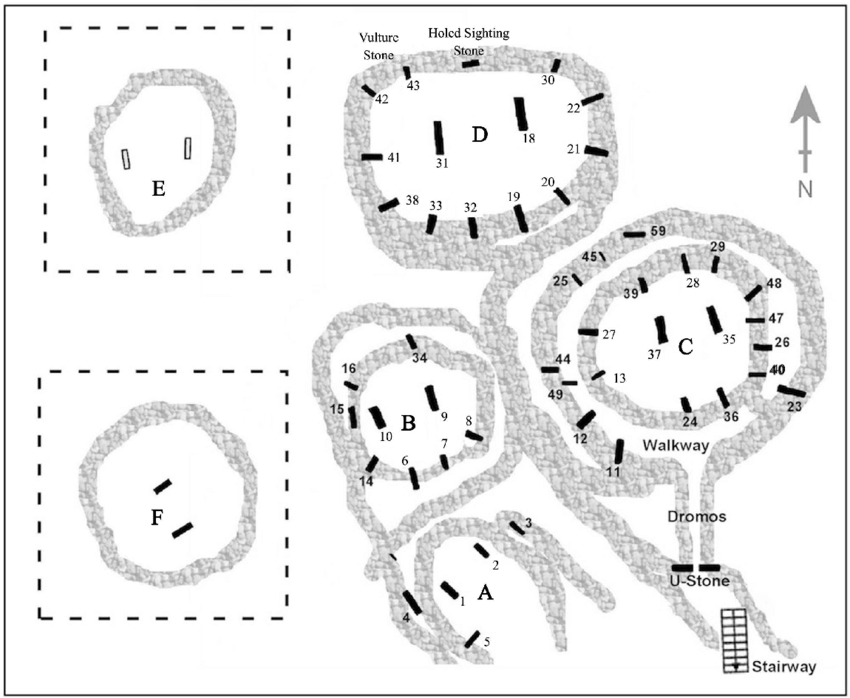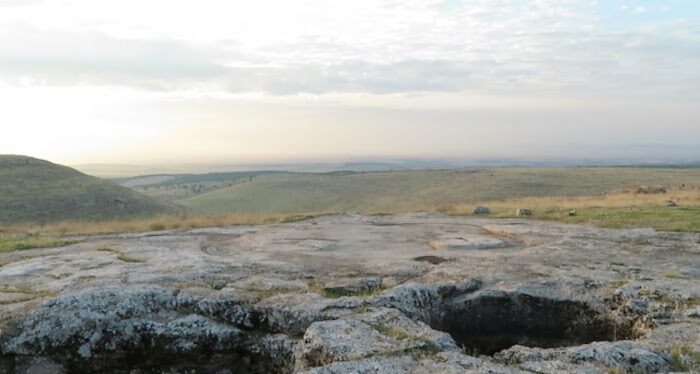However, Enclosure D is so grand, so well designed and so perfect, that it cannot be the first enclosure of its type built by these people. Almost certainly, there must have been several prior stages of development, precursor or trial stages, that preceded it. Indeed, Enclosures D and C are so impressive that they led Prof. Dendrinos [1], an architect, to propose that Gobekli Tepe had been mis-dated, and that, instead, it was a 6th millennium BCE construction. That's how impressive and anomalous GT is.
But radiocarbon dates don't lie (although they can be misunderstood). And the archaeological evidence, in the form of stone tools and other cultural artefacts, clearly point to an early pre-pottery origin, in accordance with the radiocarbon dates. So we can be confident in accepting the radiocarbon dates.
But, clearly, given its anomalous appearance, sufficient to deceive experienced architects, only something extraordinarily dramatic can explain such a grand construction. This is another reason why a Younger Dryas impact origin is a good theory - it helps to explain GT's anomalous construction, in the way that a fairly ordinary 'skull cult', which the site's archaeologists propose [2], cannot.

The problem we have, though, is that it is not clear where these earlier phases of construction, that are required to eventually design Enclosure D, took place. If they took place at GT from the very beginning, then it much be vastly older than the age of Enclosure D, currently the oldest part of the site. On the other hand, if the people of GT constructed those earlier phases elsewhere, and then moved to GT to build Enclosure D, then Enclosure D would correspond to GT's age.
In a sense, it doesn't matter which of these scenarios occurred. What we really want to know is when the first stage of development for this new construction style occurred, because according to my theory, this should be shortly after the Younger Dryas impact. Maybe a few hundred years later, to give sufficient time for a new comet cult to take hold.
So where did this new comet cult begin? At GT or somewhere else? Well, there is evidence for at least one earlier stage of development at GT, which so far remains undated. This is Enclosure E.
Enclosure E stands outside of the main tell, to the south and west of the other main enclosures. All that remains of Enclosure E is its smoothed bedrock floor, perhaps a little smaller than Enclosure D, along with a pair of deep troughs, which were probably used for storing water. None of its pillars remain, although we know there were some, because of the raised stone sockets at the centre of the enclosure which presumably once supported a pair of tall central pillars, just as we see in Enclosures D and C.
Given that its pillars are missing, I propose that Enclosure E is much older than either Enclosures D or C. It looks slightly less imposing, and a little more primitive and less well designed, than either Enclosures D or C. I suspect it preceded them by several hundred years, at least. Perhaps even 1000 years. We cannot know exactly how much older it is, but I expect it could take us roughly half-way back through the Younger Dryas period towards the Younger Dryas impact.
In which case, how old is Pillar 43? Was Pillar 43 designed specifically for Enclosure D, or did it originally stand in Enclosure E, or somewhere else, and was later moved? Again, we cannot know. But the argument that Pillar 43 cannot say anything about the Younger Dryas impact because it is at least 1000 years younger is nonsense, because we simply don't know how old it is. In any case, before Pillar 43 was constructed, the information encoded on it would have been stored elsewhere. So, really, that argument is a complete dud.
Most likely, this is what happened. Soon after the impact event, the position of the sun on the summer solstice was noted, along with the other solstice/equinox constellations. This information was recorded somehow, either orally or using the kind of proto-writing we see at GT, and is now lost or still hidden. And then, perhaps 500-1000 years later, Pillar 43 was carved. Simples. No back-calculation is needed to carve Pillar 43, because the information was already known, stored in cultural memory somehow.
[1] D.S. Dendrinos, "Gobekli Tepe: A sixth millennium BC monument", 2016.
[2] J. Gresky, J. Haelm and L. Clare, "Modified human crania from Gobekli Tepe provide evidence for a new form of Neolithoc skull cult", Science Advances 3, e1700564 (2017).




Its light burned up the history of man the current defunct academies have been preaching for way to long.
It is the undoing of so much bullshit.
A gift of truth to man from our ancestors (or someone).
As far as I am concerned this puts the nail in the coffin lid of the tenured and untenured quackademics theories of evolution as well as the origins of knowledge amongst many other things they were sure of.
Good day